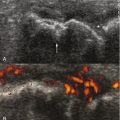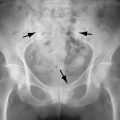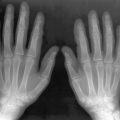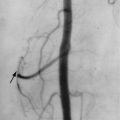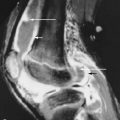Key Facts
- •
Central dual x-ray absorptiometry (DXA) scanning has become the clinical gold standard for bone mineral density assessment.
- •
Measurement of hip bone mineral density (BMD) by DXA is a better predictor of hip fracture than are measurements at other sites.
- •
Several guidelines for obtaining BMD measurements are available.
- •
T-scores are usually used to diagnose osteoporosis or osteopenia.
- •
Z-scores compare patients with age-matched controls.
- •
Proper positioning and analysis are critical in performing DXA scans and in following patients over time.
The use of quantitative technologies for measuring bone mineral density (BMD) is widespread. These technologies are commonly classified according to the skeletal sites that they are able to measure. Central methods including dual x-ray absorptiometry (DXA) and quantitative computed tomography (QCT) allow measurement of the spine and proximal femur. Peripheral methods including peripheral dual x-ray absorptiometry (pDXA) and peripheral quantitative computed tomography (pQCT) allow measurement of the distal femur, tibia, calcaneus, forearm, or phalanges. Although it does not measure BMD, quantitative ultrasound is often included with peripheral methods.
In clinical practice, central DXA is considered the gold standard for measuring BMD. This is justified by the fact that this technique has been the most widely studied. Central DXA has been used in most epidemiologic studies aimed at determining the relationship between BMD and fracture risk. It has also been used in most pharmaceutical trials of antiresorptive agents. In addition, DXA has excellent reproducibility (< 0.5% coefficient of variation at the spine) and low radiation dose (effective dose, 1 microSv). Perhaps most importantly, current World Health Organization (WHO) diagnostic criteria for osteoporosis and current National Osteoporosis Foundation (NOF) treatment guidelines for osteoporosis are based on central DXA measurements.
DXA IMAGING PRINCIPLES
Central DXA scanners include an x-ray source (tube), x-ray collimators, and x-ray detectors. Typically the x-ray source is below the scanner table and is coupled with a C-arm to x-ray detectors found above the table. During scan acquisition, the scanner C-arm moves but does not contact the patient.
Manufacturers of densitometers use different approaches for producing and detecting dual-energy x-rays. X-ray photons are differentially attenuated by the patient based in part on their energy and on the density of the tissue through which they pass. Dual-energy x-rays are needed to determine how much of the attenuation of x-ray photons is attributable to bone rather than soft tissue. One approach for producing dual-energy x-rays uses K-edge filtering to divide the polyenergetic x-ray beam into high- and low-energy components (used by General Electric densitometers). These devices use energy-discriminating detectors and an external calibration phantom. The second approach uses voltage switching between high and low kVp during alternate half-cycles of the main power supply (used by Hologic Inc. densitometers). These devices use current-integrating detectors and an internal calibration drum or wheel. Different approaches for producing and detecting dual-energy x-rays explains in part why the results from densitometers made by different manufacturers are not necessarily comparable.
The densitometry results obtained by different manufacturers’ scanners are not necessarily comparable.
DXA densitometers also differ according to the size and the orientation of the x-ray beam. Pencil beam densitometers have a collimated x-ray beam and a single detector that move in tandem. Fan beam densitometers have an array of x-rays and detectors. There are two types of fan beam densitometers, wide angle and narrow angle. The wide-angle fan beam is oriented transverse to the long axis of the body (used by Hologic Inc.) whereas the narrow-angle fan beam is parallel to the long axis of the body (used by General Electric). In general, fan beam densitometers have shorter scan acquisition times and higher image resolution.
BMD measurements obtained with DXA have several limitations. Perhaps the most important is that DXA provides an areal measurement of BMD (in g/cm 2 ) rather than the volumetric measurement (in mg/cm 3 ) provided by QCT. Areal measurements do not take into account bone thickness and are influenced by body size and bone size. In particular, young men typically have higher areal BMD than young women who have smaller skeletons.
Some investigators have tried to address this issue by adjusting areal BMD for bone size either by (1) dividing areal BMD by height, height squared, or square root of height; (2) estimating vertebral volume from posteroanterior (PA) and lateral spine scans; or (3) calculating the volumetric bone mineral apparent density (BMAD). BMAD is calculated as follows: BMC/A 3/2 for the spine and as BMC/A for the femoral neck, where A is the projected area. Unfortunately, in clinical practice, there is no simple way to account for this limitation because the standard scanner software does not perform any volumetric adjustment.
Another limitation of DXA is that it integrates cortical and trabecular BMD in the path of the x-ray beam. In contrast, QCT allows differentiation of trabecular and cortical compartments of bone.
Despite these limitations, central DXA is widely used for clinical measurement of BMD. This is appropriate because areal BMD measured by DXA has been shown to predict bone strength in biomechanical studies and to predict risk of fracture in epidemiologic studies.
Biomechanical studies have shown: (1) material properties of trabecular bone specimens vary according to BMD and anatomic site, (2) 60% to 90% variability in elastic modulus is explained by BMD, and (3) there is high inverse association between femoral BMD and failure load. Curiously, the correlations between vertebral BMD and failure load are higher for DXA ( r = 0.80 to 0.94) than QCT ( r = 0.30 to 0.66). This may reflect the contributions of both the size of the bone (which influences areal BMD) as well as the cortical component of bone to biomechanical strength.
Many cross-sectional and longitudinal studies have shown that BMD measured at various skeletal sites is highly associated with osteoporotic fractures. In general, for each standard deviation decrease in BMD, the risk of fracture doubles. DXA measurements at the hip predict hip fracture better than measurements at other skeletal sites (relative risk range 1.9 to 3.8).
In general, for each standard deviation decrease in BMD, the risk of fracture doubles.
DXA has also been used in most pharmaceutical trials for both selection of study subjects and for monitoring them over time. All medications currently approved by the Food and Drug Administration (FDA) for the treatment of osteoporosis have shown either maintenance or increase in BMD measured by DXA.
Perhaps the main reason DXA is so widely used is because there is emerging consensus on how to use its results: to help with the diagnosis of osteoporosis, assess fracture risk, determine which patients are candidates for pharmacologic therapy, and monitor therapy.
CLINICAL APPLICATIONS OF DXA MEASUREMENTS
Who Should Have a BMD Measurement?
The NOF recommends BMD measurement in all women 65 years or older regardless of risk factors, in younger postmenopausal women with one or more risk factors (other than being Caucasian, postmenopausal, or female), and in postmenopausal women who present with fractures ( Box 6-1 ).

Apart from the NOF, other groups including the American College of Rheumatology, American Gastroenterological Association, and American Association of Clinical Endocrinologists (AACE) have published guidelines for measurement of BMD.
The AACE guidelines are the most comprehensive and recommend BMD measurement in all women older than 65 years, in all women 40 years or older who have sustained a fracture, in women with x-ray findings suggesting osteoporosis, in women beginning or receiving long-term glucocorticoid therapy, and in adult women with symptomatic hyperparathyroidism, nutritional deficiencies, or diseases associated with bone loss ( Box 6-2 ).

The cost of DXA is covered by Medicare and by most third-party insurance companies. Medicare recognizes the following indications: estrogen-deficient women at clinical risk for osteoporosis as determined by the physician, individuals with x-ray evidence of osteopenia or vertebral fracture, individuals receiving or planning to receive long-term glucocorticoid therapy (expected use over 3 months with > 7.5 mg prednisone or equivalent), individuals with primary hyperparathyroidism, and individuals being monitored for response on an FDA-approved osteoporosis drug therapy.
Medicare permits individuals to repeat BMD testing every 2 years. Exceptions for more frequent testing are made when medically necessary, for example, patients on glucocorticoid therapy or patients who need baseline measurement to allow monitoring if the initial examination was performed with a different technique from the proposed monitoring technique.
What Bones Should be Measured?
Typically, BMD is measured at the lumbar spine and proximal femur. About 20% to 30% of patients have significant spine-hip discordance, where T-scores at one site are of a different diagnostic category than the other site. Causes of DXA-measured spine-hip discordance include differences in the age at which peak bone mass is reached and in the rate of bone loss at different skeletal sites. For example, in perimenopausal women, the rate of bone loss is greater in cancellous bone (vertebra) than cortical bone (proximal femur). Another reason for measuring both spine and hip is that the spine BMD is a better predictor of spine fractures, whereas the hip BMD is a better predictor of hip fractures. This is not true in patients with severe degenerative disease of the spine. Advanced degenerative disease of the spine can falsely raise the measured BMD, making hip BMD a more accurate measure of the risk of spine fracture.
When spine or the proximal femur measurements are invalid, distal radius measurements are commonly obtained. For example, patients with spine instrumentation, fractures, severe degenerative disease, or scoliosis may benefit from a distal radius BMD measurement. Patients with bilateral hip replacements or other instrumentation, severe hip osteoarthritis, or patients who exceed the weight limit of the table are also candidates. Finally, a forearm BMD measurement is useful in patients with hyperparathyroidism, where cortical bone loss exceeds trabecular bone loss, because the midradius region of interest contains mostly cortical bone.
Lateral spine measurement is less influenced by degenerative changes than the PA spine. Drawbacks are the frequent overlap of the L2 vertebral body by ribs and the L4 vertebral body by the pelvis. Using lateral spine BMD for diagnosis of osteoporosis is not recommended. Lateral scans have been adapted for lateral vertebral assessment (LVA™) or instantaneous vertebral assessment (IVA™) to detect vertebral fractures rather than measure BMD.
How Are DXA Results Expressed?
Although DXA printouts vary according to the manufacturer and software version, common features include summary of patient demographics, image of the skeletal site scanned, a plot of patient age versus BMD, and numerical results. The presentation of numerical results is usually configurable by the DXA operator. Typically, the BMD values in g/cm 2 , T-scores, Z-scores, and other data (e.g., BMC, area, %BMD, vertebral height) for various regions of interest are presented. These results help clinicians to diagnose osteoporosis, assess risk of fracture, select patients for pharmacologic therapy, and monitor that therapy.
Diagnosis of Osteoporosis with DXA
In most cases, the diagnosis of osteoporosis is made according to the T-score, a standardized score that is unique to bone densitometry. T-scores are calculated by subtracting mean BMD of a young-normal reference population from the subject’s measured BMD and dividing by the standard deviation of a young-normal reference population. In postmenopausal Caucasian women, the WHO criteria of osteoporosis, osteopenia, and normal are widely used ( Box 6-3 ).
Osteoporosis: T-score ≤ –2.5
Osteopenia: T-score between –1.0 and –2.5
Normal: T-score ≥ –1.0
T-scores rather than absolute BMD values are used to make the diagnosis of osteoporosis in part because different approaches to BMD measurement have been used. Manufacturers use different approaches for producing dual-energy x-rays and detecting them, calibrating the densitometers, and sometimes defining the regions of interest where the BMD is measured. Thus the same BMD value cannot be used for diagnosis of osteoporosis using different devices. The use of a diagnostic threshold based on a T-score enables the same diagnostic criteria to be used regardless of the DXA manufacturer.
BMD measurements are also expressed with a Z-score. The Z-score is calculated similarly to the T-score except that an age matched reference population is used. In postmenopausal women, a low Z-score may be helpful in documenting greater than usual bone loss in comparison with age-matched controls and indicate the need for additional testing (e.g., for hyperparathyroidism). Z-scores are used instead of T-scores in the evaluation of children and some premenopausal women.
When using DXA for the diagnosis of osteoporosis, the lower of the T-scores of the PA spine and hip is used. In the spine, using the region of interest that includes L1 through L4 is preferred. Only those vertebrae affected by focal structural abnormalities (i.e., fracture, focal degenerative disease, surgery) should be excluded from analysis.
The lower of the T-scores of the PA spine and hip is used for patient diagnosis. The lower T-score of the femoral neck and total hip regions should be used for diagnosis of the hip status.
In the hip, using the lower T-score of the total hip and femoral neck regions of interest is recommended. Ward’s region should not be used to diagnose osteoporosis. Ward’s region is a triangular region in the femoral neck that is created by the intersection of tensile, compressive, and intertrochanteric trabecular bundles. On DXA scans, Ward’s region is a square that is variably placed (depending on the manufacturer) on the femoral neck. It has high precision error because of its small area.
Diagnostic Pitfalls
When interpreting DXA examinations it is important to check whether correct patient demographics were entered into the DXA computer. Wrong age, gender, and race may influence T-scores or Z-scores.
Disregarding improper scan acquisition or analysis is among the most common pitfalls of interpreting DXA results. It is important to evaluate the DXA image for proper patient positioning, scan analysis, and artifacts. On a properly positioned PA spine scan, the spine is aligned with the long axis of scanner table, both iliac crests are visible, and the scan extends from the middle of L5 to the middle of T12 ( Figure 6-1 ). On a properly positioned hip scan, the femoral shaft is aligned with the long axis of the scanner table, the hip is internally rotated, and the scan includes the ischium and the greater trochanter ( Figure 6-2 ). The lesser trochanter is a posterior structure, and its size is the best sign of the degree of rotation of the proximal femur; the lesser trochanter appears small when the hip is internally rotated. BMD values are affected by the degree of rotation of the proximal femur and the position of the femoral neck region of interest (ROI). On properly positioned forearm scan, the radius and ulna are aligned with the long axis of the scanner table, and their distal ends are visible.


The images should also show correct scan analysis: ROI size and location. On PA spine scans, the vertebral bodies should be numbered correctly (see Figure 6-1 ). This is especially true in patients with four or six lumbar vertebrae, where numbering should begin at the iliac crest—typically, corresponding to the L4–5 disk space. On hip scans, the femoral neck region must not include the greater trochanter or the ischium (see Figure 6-2 ). Femoral neck region placement is manufacturer specific; therefore it is important to follow the manufacturer’s recommendations. General Electric scanners measure the midportion of the femoral neck, whereas Hologic Inc. scanners measure the base of the femoral neck.
Identification of artifacts on DXA images is especially important because they frequently affect the measured BMD ( Box 6-4 ). Artifacts on spine scans may be inherent to the spine or may be due to overlap of structures.

